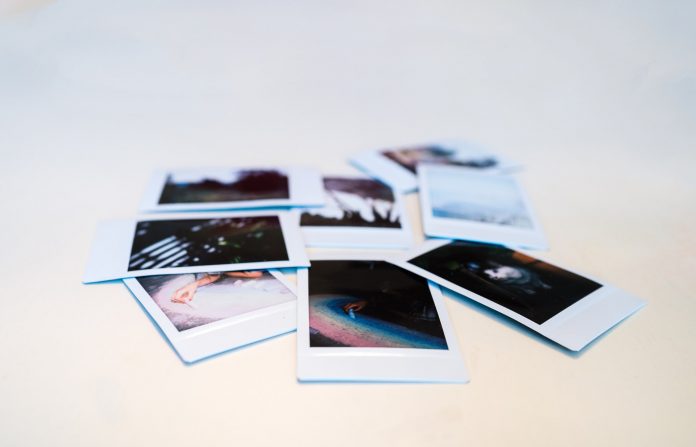
A business card has been an integral tool for businesses and professionals for traditional marketing. But there is a growing misconception on its usage. Companies are riding on the wave of digitization and don’t pay much heed to business cards. But it’s fatal for their business.
In this blog, we will discuss why business cards are still significant and how to design them to attract more customers.
Why business cards are still important
Every professional and business owner looks for different ways to connect with their potential clients. Every single lead is an asset to them. Usually, business cards are contemplated as a primary connecting point with a prospective client or influencer. A thoughtfully-designed business card not only reflects your services but also shows how professional you are. Therefore, if you don’t have a business card, you are definitely missing out on an excellent connectivity tool. Here are a few reasons why business cards are still relevant:
- It is more personal
- It helps to build a strong first impression
- It attracts the attention
- It makes you look more professional and legitimate
- It is cost-effective
- It helps in building brand identity
- It is easily shareable
- It is the most effective tool for direct marketing.
Top 10 tips on how to design business cards that attract more customers
- Choose the right shape: No matter in which corner of the world you go, you will find most of the business cards in a rectangular shape. But why keep trapped in an old habit? Printing techniques have grown more advanced and affordable. Professionals have room to experiment with unique shapes and designs. A die-cutting technology enables you to take the shape of your choice. It also lets you place holes in the center of a card to create a responsive design. The 3D design is a little more advanced. Using this technique, you are not designing a card but generating a small item with critical information. Whether you want to create innovative shapes or not, depends on the message you want to communicate. Keep in mind the logistics while finalizing the shape. How it will fit in the wallet—take into consideration.
- Choose the correct size and color: The card’s size usually depends on the standard of that particular country. In the U.S., for instance, the ideal size is 3.5*2 in. You can also go with the bigger size, but keep in mind factors like bleed area, trim line, and safety line. Colors, too, play an important role in business card design. Colors have the power to evoke a particular type of emotion. Choose the color that not only grab the attention but also match your brand identity.
- Add logo and other graphics: A logo is perhaps the most crucial element in designing a business card. A logo is a visual identification of your brand and services. It should take center stage on your business card. If you are putting the information both on the front and back of the card, it’s good to showcase the logo on both sides. Though minimalism is prevalent in today’s design world, if you’re finding empty space in your card, fill it with additional graphics. For example, if you have a dance academy, you can add the girl’s image or a boy on the card.
If you think your company’s logo isn’t so impressive, better you get it revamped or create a logo from scratch. For this, you can use an online logo maker for free. But if you don’t have a budget constraint, you can either hire a logo designer or launch a logo design contest with a creative marketplace.
- Include relevant information: What your business card says actually depends upon you. While designing a business card, make sure you put all the necessary information on it. This will help you as well as your clients in many ways. Here is a quick checklist of some common choices you can make to put on your business card:
- Name
- Contact number
- Email address
- Website URL
- Social Media
- Address
- Slogan
Keep in mind that business card is not just about providing information but to retain it. People might already have your above details, but keep your card in hand just if they forget it.
- Choose the right font style and size: Once you are clear with what you want to convey, you can choose how it looks. Finding the right typography can be challenging. It’s better to stick with two or three fonts, just like colors. Too many fonts can be distracting. No matter which font you choose, make sure it is readable with other design elements. You don’t want your client to have a strain on their eyes to your information. The text should be at least 8pt, but you can highlight the vital information with a slightly bigger and bolder font size.
- Consider special finishes: Using special finishes is the best way to leave an instant and lasting impression. Here are some of the popular finishes that can go a long way in benefiting you in your business card design strategy:
- Embossing: It is a technique of pressing an image into a cardstock to create a 3D design.
- Letterpressing: This technique works opposite to embossing. Instead of raising the paper, the letterpressing or debossing technique pushes the image into the paper. This can be done with both — with or without ink.
- Foil stamping: It is the technique that uses heat, foil film, and metal dies for giving a shiny effect to the images. This also works to highlight the text if you have selected a bold typeface.
- Spot UV and Varnishing: Spot UV is used to draw attention to critical areas of the card and making the color look richer and shiny. A Varnish finishing can use either silk, matte, or gloss coating that can be used not only to enhance the design but also to guard the paper.
- Create a QR code: Not so popular QR code is an efficient way to link online and printed material together. It is an excellent way of saving space and providing additional information without any clutter. You can link it either to your website or can use it more creatively.
- Test the printing quality: Before you go for final printing, it is advisable to check the printing quality. You surely want to make things look clean and sharp. It’s better to double-check the colors, too. Finally, check the ink to know if it disappears while rubbing or underwater.
- Choose material wisely: Picking the appropriate material for your business cards can be a little difficult task for you. There are plenty of options — plastic, plain, foiled, colored, and many more. Whatever you pick, but make sure the material is the best fit for your business card. For instance, recycled paper is the most appropriate for someone in the environmental industry.
- Be creative all the way: If you want to get instant attention, make sure your business card should be creative in all possible manner. But don’t overdo it; otherwise, it will fail to fulfill its purpose. You can always do testing with people around you. While trial, even if a single person doesn’t get what you want to convey, you should not go with that business card design.
Conclusion:
A thoughtfully-designed business card can do wonders for your business. In fact, it can do a lot more than what you might have thought. They’re still an effective marketing material that helps you build an excellent first reputation and narrate your brand story. When and how your prospects will come— you never know. So, it’s imperative to have compelling, meaningful business cards always ready with you.








